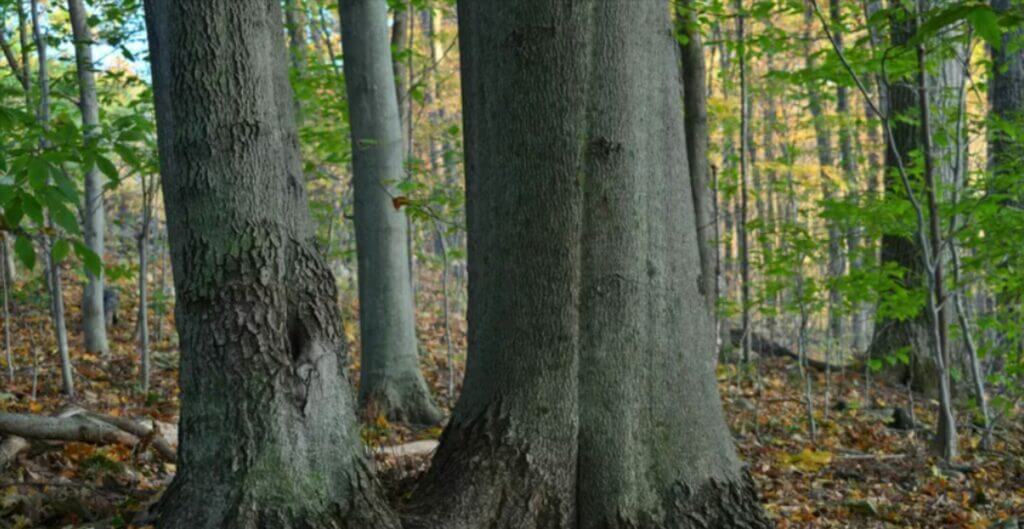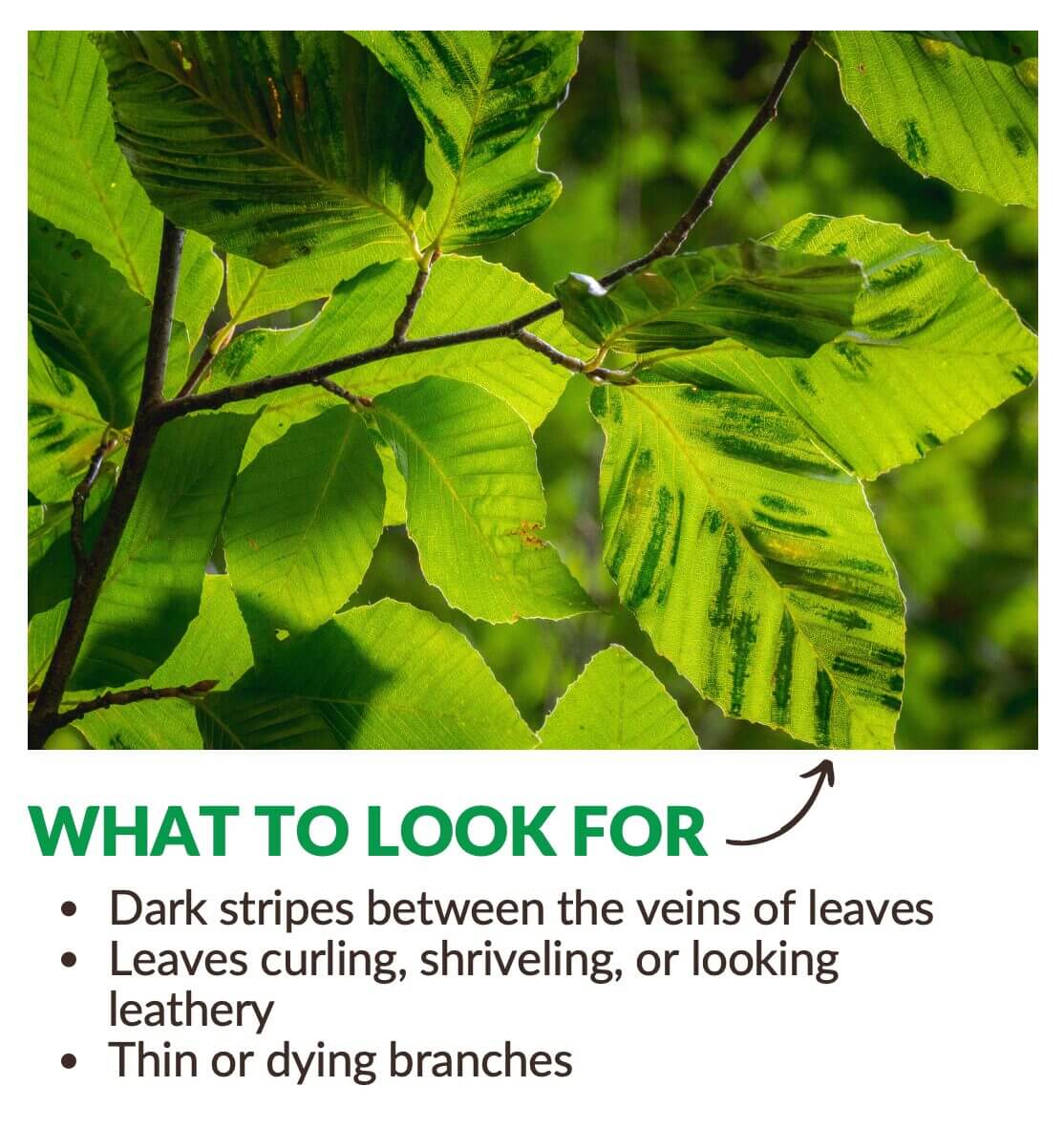Understanding Beech Leaf Disease: A Growing Threat to Beech Trees
Beech Leaf Disease (BLD) is an emerging forest health issue that is raising concern among arborists, environmentalists, and property owners alike. First identified in Ohio in 2012, this condition is now spreading rapidly across the Northeast, affecting both American and European beech trees. Whether in forests, parks, or private landscapes, BLD is causing gradual decline and even mortality in one of our region’s most iconic tree species.
As a leader in professional tree care, Peters–Todd’s Inc. is actively engaged in the fight against BLD, offering targeted treatment solutions grounded in science and developed in collaboration with some of the nation’s top arboricultural researchers.

What is Beech Leaf Disease?
Beech Leaf Disease affects beech trees of all ages and sizes, from saplings to mature canopy specimens. The disease is currently attributed to a microscopic nematode (Litylenchus crenatae mccannii), which infests leaf tissue and disrupts healthy growth.
While research is ongoing, the impact is clear: untreated, BLD leads to progressive defoliation, dieback, and often death—threatening not only the beauty of individual properties but also the health of entire forest ecosystems.
Recognizing the Signs of BLD
The key symptoms to look for include:
- Early Stage: Dark green or brown striping between leaf veins (“banding”), visible during full leaf-out
- Mid-Stage: Curling, leathery texture, and deformed leaves; reduced canopy density
- Advanced Stage: Premature leaf drop, poor new leaf development, branch dieback, and eventual tree death
Because BLD can affect even otherwise healthy trees, routine inspections during the growing season are critical.

How It Spreads
Although the nematode is the primary known cause, its spread mechanisms are still under investigation. Current theories suggest it may be moved by wind, rain, wildlife, or human activity, including the transport of infected plant material or contaminated tools. The potential for widespread ecological impact is significant.
Our Proven Treatment Approach
In response to the growing threat of BLD, Peters–Todd’s Inc. has developed a biennial (every two years) treatment program in partnership with one of the nation’s largest tree care companies. This program is designed to suppress the nematode population and boost the tree’s natural resistance to disease stress.
Our Two-Step Application Process:
- Macro Trunk Injection
A high-volume injection of fungicide is administered directly into the trunk flare. This targets internal fungal activity and supports overall vascular health. - Potassium Soil Drench
A potassium-based fertilizer is applied as a soil drench at the base of the tree. Research has shown that improved tree vigor through potassium supplementation can help trees better tolerate BLD symptoms and reduce disease severity.
Applications can be made any time up until late September. Even trees treated after nematode migration may still see a reduced number of infected leaves in the following season.
The Road Ahead
BLD is a complex and still-evolving issue. As researchers work to better understand its biology and long-term impact, early detection and treatment remain the best defense. Our arborists continue to stay at the forefront of industry developments to provide our clients with up-to-date, science-backed care.
Conclusion: Protect What Matters
Beech trees are not just valuable for their beauty—they are foundational to many landscapes and ecosystems. If you have beech trees on your property, early action is essential. With the right strategy and experienced care, it is possible to manage BLD and preserve the health of these treasured trees.
Let’s Walk Your Property Together
If you’re seeing signs of BLD—or simply want peace of mind—Peters–Todd’s Inc. is here to help. Our certified arborists are available to inspect your trees, explain your options, and design a care plan that works for your landscape.
Call us at (908) 204-9918 to schedule a visit.
Together, we can protect your beech trees—and everything they support.